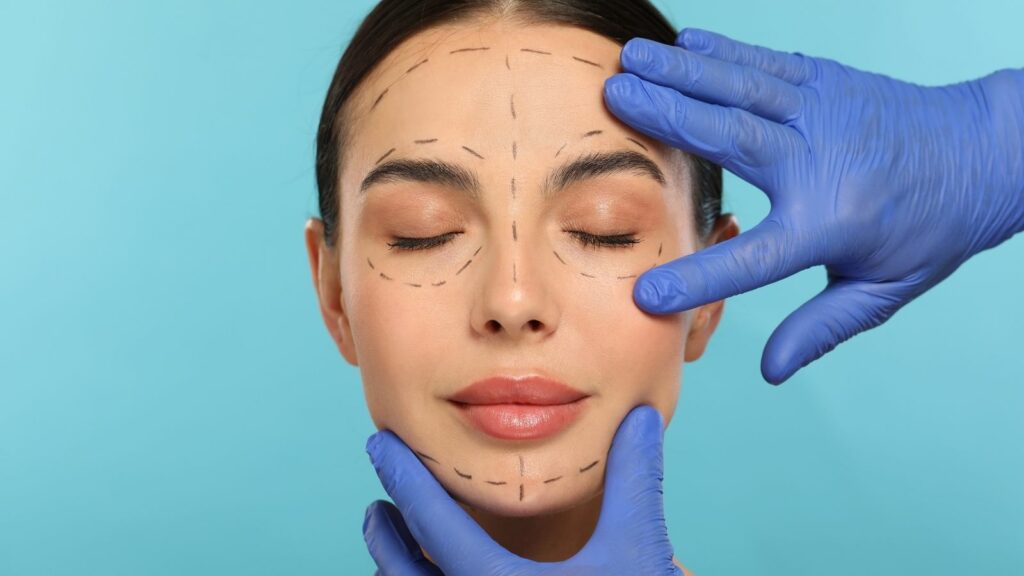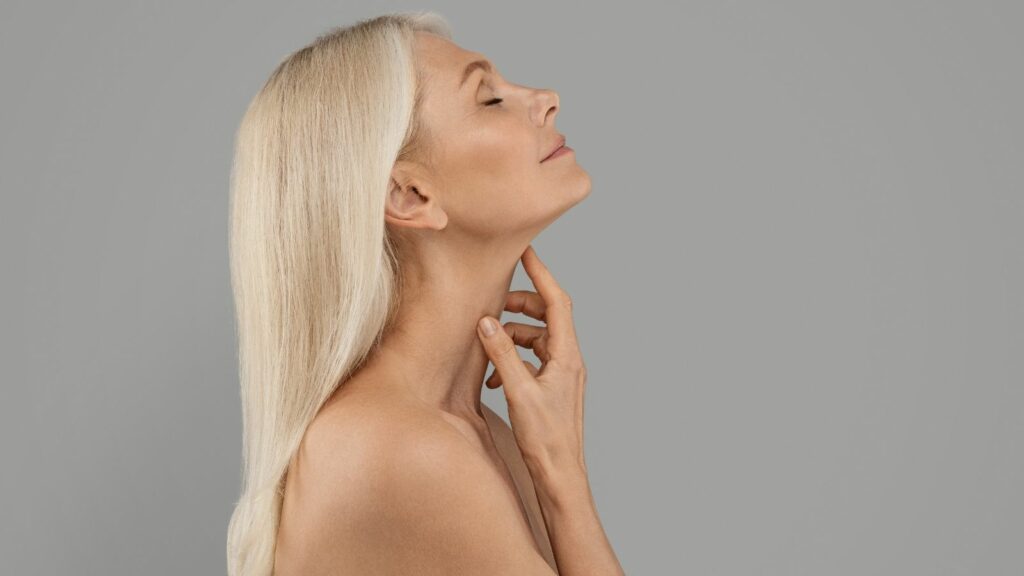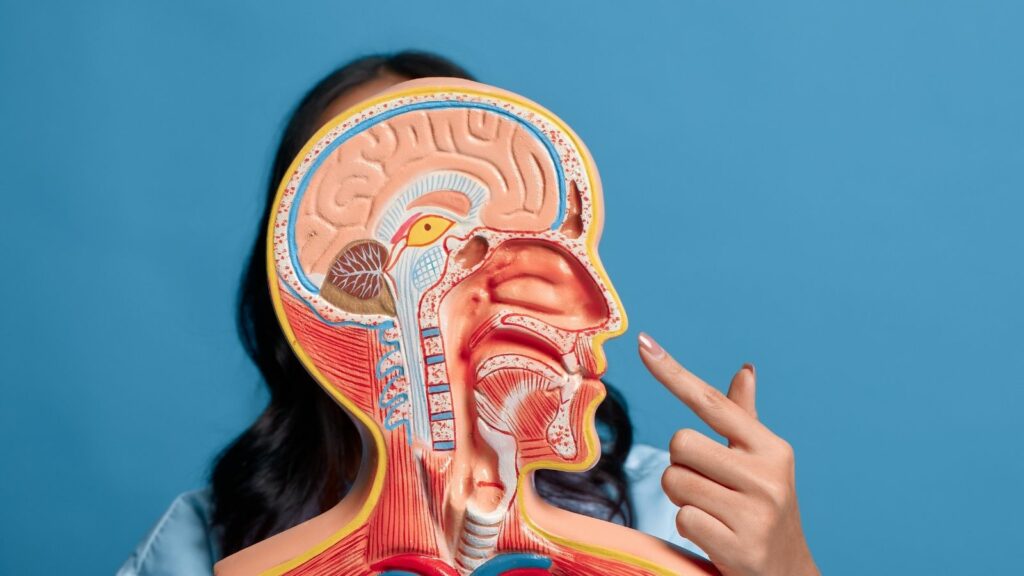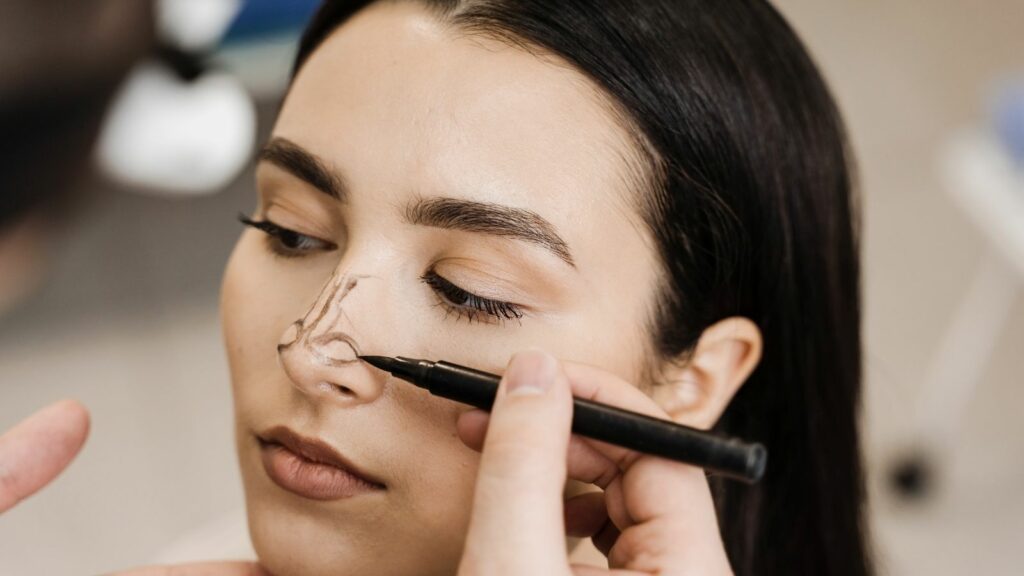Rhinoplasty is the procedure of reshaping the nose into an aesthetically and functionally ideal structure that is in harmony with the other elements of the face. Hair transplantation, on the other hand, is the permanent transfer of hair follicles that are genetically resistant to shedding into areas where hair loss has occurred. Today, these two important interventions are applied not just to correct an isolated organ, but with a holistic approach to ensure the overall harmony and aesthetic balance of the face. Thanks to modern techniques and personalized planning, the goal is to achieve natural and long-lasting results that avoid an artificial appearance and reflect the patient’s own identity. It is the art of becoming the best version of yourself.
What is the difference between open and closed techniques in rhinoplasty surgery?
This is one of the first questions that comes to mind for anyone considering nasal aesthetics, and in fact it determines the basic philosophy of the surgery. We can compare it to repairing a car engine. The surgeon will either fully open the hood and have complete control over everything, or will perform the repair through small windows. Both approaches have their own proper place and time:
Open rhinoplasty is performed by making an incision, usually in the shape of a barely noticeable “V”, on the small strip of skin that separates the nostrils, which we call the “columella”. Through this incision, the nasal skin is gently lifted like a flap. This allows the surgeon to see the entire bony and cartilaginous framework of the nose directly, without any obstruction. Just like an engine with its hood open, every component is visible. Thanks to this complete control, it is invaluable especially in crooked noses, severe nasal tip deformities, revision cases where the patient has had previous surgery and it is unclear what will be encountered inside, or in situations where cartilage grafts need to be added to strengthen the nasal framework. The surgeon can place sutures with millimetric precision and fix grafts exactly where desired. So, does it have any disadvantages? Of course. There is that tiny scar left at the nasal tip area and the postoperative swelling may be somewhat greater. However, when closed properly with the right technique, this scar becomes almost invisible over time.
Closed rhinoplasty, on the other hand, is a technique in which all incisions are made inside the nostrils, leaving no external scar. In this technique, the surgeon works almost as if through a keyhole, reaching the nasal framework through small internal windows. As there is no external incision and the blood supply to the nasal tip is less affected, postoperative swelling is usually less and the recovery process may be slightly faster. It is ideal mainly for correcting the dorsal hump on the nasal bridge or making relatively small, simple changes to the nasal tip. However, this limited field of view makes complex maneuvers more difficult. In particular, reshaping the nasal tip or placing structural supports is quite challenging with this technique.
In conclusion, there is no clear-cut answer to the question “which one is better?”. Large-scale scientific studies have also shown no significant long-term difference between the two techniques in terms of success or the need for a second operation. What matters is that the surgeon chooses the most appropriate technique for you based on the needs of your nose, the targeted outcome, and their own experience.
What do structural and preservation rhinoplasty philosophies mean?
In the past, when people thought of nose aesthetics, “reduction” usually came to mind. Bones were rasped, cartilages were removed, and a smaller nose was created. However, over time it became evident that noses that were excessively reduced and whose supporting tissues were weakened could collapse over the years under the combined effects of gravity and contractile scar healing, begin to look pinched as if squeezed by a clip, and most importantly, lead to breathing problems. These experiences gave birth to the modern rhinoplasty philosophy.
We can compare this to the renovation of a building. Structural rhinoplasty is like strengthening the foundation and load-bearing columns of the building. In this philosophy, the goal is not only to make an aesthetic change, but also to give the nose a solid framework that will allow it to maintain its shape for many years. Weak cartilages are supported with cartilage grafts taken from the patient’s own body; the “roof” is reinforced; the nasal tip is stabilized. In this way, the nose not only looks good, but also becomes resistant to the wear and tear of time. It is like rebuilding the internal skeleton of the nose:
Preservation rhinoplasty, on the other hand, is like preserving the original architectural elements, valuable walls and ceiling ornaments of the building during renovation. In this approach, the aim is to respect the natural anatomy of the nose as much as possible and to cause minimal damage to the tissues. For example, instead of cutting off and discarding the hump on the nasal dorsum, a segment is removed from beneath the nasal bones so that the entire dorsum can be lowered as a single unit without disrupting its natural lines—this is a cornerstone of this philosophy. The valuable ligaments and vessels under the nasal skin are preserved, which means less swelling, faster healing and a more natural result.
So what is the ideal approach today? In fact, it is the combination of the two: “structural preservation rhinoplasty”. In other words, while preserving the original architecture of the building, you also reinforce its weak foundations and load-bearing columns. In this hybrid approach, the surgeon works like a sculptor; using preservation techniques in some parts of the nose while adding structural supports where needed in others. This offers a tailor-made solution unique to each patient’s nose, and represents the highest point modern rhinoplasty has reached.
What cartilage grafts are used in nasal aesthetics?
Cartilage grafts, which are the building blocks of structural rhinoplasty, are used to support and shape the nose. The ideal material is the patient’s own tissue, which carries no risk of rejection by the body. The main sources for grafts are:
- Septal cartilage
- Ear cartilage
- Rib cartilage
- Homologous cartilage
Each of these sources has its own specific indications. Septal cartilage is harvested from the central partition inside the nose. Due to its straight and sturdy structure, it is the first choice and does not require any additional incisions because it is obtained from the same surgical field. However, its quantity is limited. Ear cartilage is harvested from the auricle. Its soft and flexible structure makes it particularly suitable for giving natural fullness and contour to the nasal tip. Rib cartilage, on the other hand, is almost like a joker card. It provides a large amount of very strong material, especially in patients who have undergone previous unsuccessful surgeries, have insufficient cartilage remaining in the nose, or require major reconstruction. Finally, in cases where the patient’s own rib cartilage is not preferred, homologous cartilage—obtained from cadaver donors and specially processed—can be a reliable alternative.
What do technologies such as piezosurgery and 3D simulation provide in rhinoplasty?
Technology transforms the art in the surgeon’s hands into a more precise science. Two important innovations in this field have radically changed both the surgical process and the patient experience.
- Piezosurgery (ultrasonic rhinoplasty) is a revolution that has practically made traditional instruments such as the hammer and chisel, used for shaping the nasal bones, obsolete. This system works through microvibrations generated by sound waves. Its greatest feature is that it cuts only hard tissue, namely bone. It does not touch the surrounding soft tissues such as vessels, nerves, and mucosa. We can compare it to a fine, precise tool used by a sculptor to shape a block of marble. Traditional tools are more like a hammer and chisel; they may lead to uncontrolled fractures and damage to the surrounding tissues. With piezosurgery, the bones can be cut much more precisely and in a controlled way, which significantly reduces bruising and swelling after surgery and makes the recovery period more comfortable.
- Three-dimensional (3D) simulation is the most powerful tool of preoperative planning and doctor–patient communication. A special camera system is used to create a three-dimensional digital copy of your face. On this model, possible surgical outcomes are simulated within the limits of your expectations and your facial anatomy. This is essentially the “digital rehearsal” of the surgery. The greatest advantage of this rehearsal is that it aligns expectations. You can visually express what you want, and the surgeon can clearly show you what is and is not realistically possible. This transparent communication minimizes postoperative disappointment and the likelihood of saying, “This is not what I imagined.” Remember, this is a simulation, not a guarantee of the final result; but it is like looking at the map together before setting off on a journey and helps ensure that you are on the right path.
Saç Ekimi Hakkında Merak Edilenler
What are the differences between FUT and FUE methods in hair transplantation?
In hair transplantation, the choice of method basically depends on how the hair follicles are harvested from the donor area at the back of the head. There are two main methods, and each has its advantages depending on the patient’s lifestyle and needs.
We can compare this to picking apples from an orchard. FUT (Follicular Unit Transplantation), the so-called strip method, is like cutting off the most productive branch from the tree and then carefully sorting out the apples (hair follicles) from that branch on a table. In this method, a thin strip of hair-bearing scalp is removed from the back of the head, and this strip is dissected under a microscope into natural follicular units by experts. In this way, a very high number (sometimes 4000–5000) of high-quality grafts can be obtained in a single session. It is the most efficient method for patients with advanced hair loss. However, just as cutting a branch leaves a mark on the tree, a scar remains where the strip was removed. In FUT, this appears as a thin, linear scar on the back of the head. Although this scar is easily covered when the hair is slightly long, it can be a disadvantage for those who want to wear their hair very short.
FUE (Follicular Unit Extraction), on the other hand, is like climbing the tree and picking the apples one by one without damaging the branch. In this method, hair follicles are removed one by one from the donor area using a special micromotor with circular motions. It does not leave a linear suture line; instead, it leaves only tiny dot-like scars that become barely noticeable over time. This offers great freedom to those who want to shave their hair very short. However, picking apples one by one takes longer and is more laborious. Similarly, FUE is a longer procedure, and the number of grafts harvested in a single session is generally more limited compared to FUT. There is also a very important point to consider: in inexperienced hands, picking too many apples from the orchard can weaken the tree. Likewise, in the FUE method, excessive and unplanned harvesting from the donor area (“over-harvesting”) can cause permanent thinning and a moth-eaten appearance at the back of the head. For this reason, although FUE may seem simple, it actually requires great skill and foresight.
What is the DHI technique in hair transplantation, and how does it differ from the traditional method?
DHI (Direct Hair Implantation), which you often hear about in the market, is not actually a completely different hair transplantation method from FUE, but a special technique used in the implantation phase of follicles harvested with FUE. In other words, the follicles are still extracted one by one using the FUE method. The difference lies in how these follicles are placed into their new locations.
In traditional FUE implantation, the procedure has two stages: first, the surgeon creates small incisions, or “channels,” in the recipient area. Then the team uses forceps to place the harvested hair follicles into these pre-made channels.
In the DHI technique, a special device called the “Choi pen” (implanter pen) is used. This pen resembles a push-button pen. The hair follicle is placed into the hollow needle at the tip of the pen. When the surgeon inserts the pen into the scalp, the pen simultaneously creates the channel and, by pressing the button at the back, implants the follicle. In other words, channel creation and follicle placement are done in a single step.
Proponents of this technique claim that because the follicles remain outside the body for a shorter period and experience less trauma during placement, their survival rate may be higher. It is also thought to provide very precise control over the angle and direction of each follicle. However, DHI is a slower and more meticulous method, which is why it is usually more expensive and less practical for very large areas of baldness.
The most important thing to remember is this: whether traditional channel opening or DHI pens are used, the decisive factor in the result is not the device itself, but the experience, skill, and planning of the surgeon and the team using it. A good farmer can do wonders even with the simplest tools, while an inexperienced one can ruin the field with the most advanced equipment.
Why is planning so crucial for a successful hair transplant?
Hair transplantation is not just about filling empty areas. It is an investment in the future, and the most important capital of this investment is the limited number of donor hair follicles on the back of your head. Think of your donor area as a bank account from which you can only withdraw money, but never deposit it. Each graft is like withdrawing money from that account, and once removed, it cannot be replaced. That is why you must use this capital wisely.
Successful planning requires thinking not just in three dimensions, but in four: the length and width of the scalp, its depth, and most importantly, time. A hair transplant that looks great at the age of 28 may look very artificial and even ridiculous when the same person is 58, because hair loss continues to progress. Therefore, there are some basic rules of planning:
- Prioritization: Limited grafts should be used in the most aesthetically critical areas. The frontal hairline, which frames the face and gives a person their identity, is always the first priority. Spending all the capital to increase density in the crown area of a young patient means that if the front recedes in the future, there may be no grafts left to repair it—a major strategic mistake.
- Conservatism: Especially in young patients, one should avoid designing a very low, straight, and aggressively youthful hairline. An age-appropriate hairline with slightly recessed temples maintains its natural look as the years pass. The goal is not to revert to how you looked at 18, but to create an aesthetic illusion that looks good at your current age and in the future.
- Proper Candidate Selection: Hair transplantation is not suitable for everyone. In very young patients (under 25) whose hair loss is still progressing aggressively, it is usually better to wait and first try to slow the loss with medical treatment. Otherwise, the native hair around the transplanted follicles will continue to shed, and the result may look like isolated “islands” of hair—very artificial.
A good surgeon is not only a skilled technician, but also a good strategist. Sometimes the best decision is to refuse to operate and instead draw up the right roadmap for the patient.
What is the recovery process after hair transplantation, and what should be considered?
Hair transplantation is not a process that ends when the follicles are implanted; in fact, that is when the real journey begins. The success of the operation depends on how well you care for these new and delicate “seeds.” The first two weeks are especially critical. There are some basic rules you need to follow:
- Keeping the transplanted area moist
- Sleeping with the head elevated
- Washing gently
- Avoiding picking off the scabs
- Avoiding heavy exercise
- Avoiding sweating
- Staying away from alcohol and smoking
After you get through this initial period, a patience-demanding waiting phase begins. Knowing the stages of this process helps prevent unnecessary anxiety.
- Shock Shedding (Weeks 2–6): This is the phase almost every patient experiences and during which most panic occurs. The hair shafts of the transplanted follicles begin to fall out. This is not a failure! The follicles—the “seeds”—are safe under the skin. They simply enter a resting phase because they have gone through a trauma.
- First Sprouts (Months 3–4): You begin to see the first fruits of your patience. Small, thin, fuzz-like hairs start to appear on the scalp.
- Becoming Noticeable (Months 6–8): The hair begins to grow and thicken. The result gradually takes shape and becomes visible.
- Final Result (Months 12–18): This is the period when the hair matures, thickens, and reaches its final form. Therefore, you need to wait at least one year to see the true answer to the question “How did my hair transplant turn out?”.













